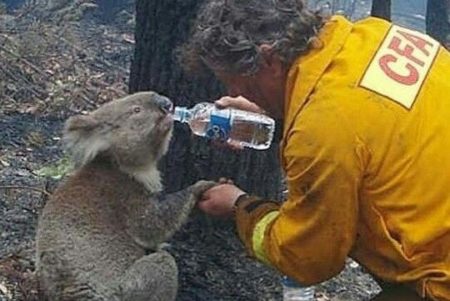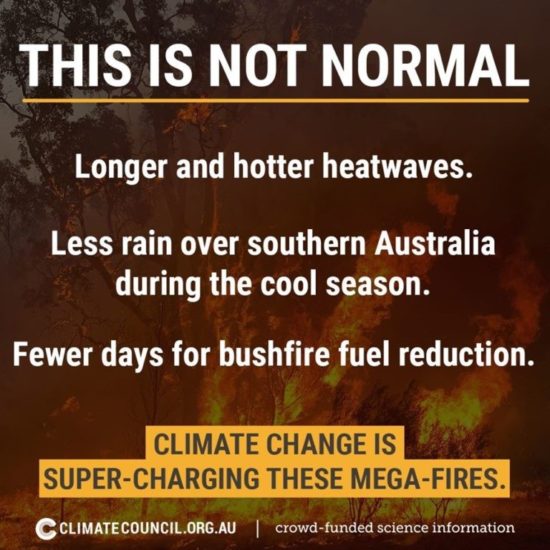December 31, 2019 – The newscasts this morning are marking this as the last day of a decade which of course is wrong in the literal sense based on our decimal system of counting. Decades don’t end in a year ending in nine but rather years ending in tens. So the actual last date of the decade will be December 31, 2020.
But anytime the calendar turns from a nine to a ten or a nineteen to a twenty, we tend to make a big deal of it. This is a commons mistake and one with which we can live, unlike mistakes being made by many nations around the world when it comes to taking climate change action.
It doesn’t take much more than casual observation to see a cause and effect correlation happening around our planet when talking about climate.
Greta Thunberg, the Swedish teenage climate activist, points out that “people are already suffering and dying from the climate.”
From a decade of record-breaking global temperatures, outbreaks of unprecedented wildfires in North America and Australia, hurricanes, cyclones and typhoons that are increasingly ferocious and unpredictable in behaviour, massive ice sheet melts in Greenland and Antarctica, blobs of unprecedented ocean surface heating in areas of the Pacific, Indian and Atlantic Oceans causing massive fish kills and deoxygenation events, and reinsurance industry reports that show the cost of climate disasters reaching new all-time highs, there is plenty of evidence that our Earth’s climate is changing.
A single event in today’s headlines brings all of this new reality home. In the town of Mallacoota, near Sydney, Australia, it is being reported that people are seeking refuge in the Tasman Sea because of an approaching wildfire that threatens their community. The picture below of a glowing and smoky red sky says it all. The radiant heat from blazing bushfires combined with temperatures that have hit the 40+ Celsius (over 104 Fahrenheit) has led to emergency workers and the Australian media advising people to seek shelter in the water.

Australia is the canary continent in the coalmine when it comes to envisioning our global future. There are currently 100 wildfires burning, threatening many of the country’s cities across the southern half of the continent. The fires are so widespread they are creating their own weather. And while the Australian government has remained reticent about acting to combat climate change, an independent crowd-funded Climate Council, formed because of a previous climate-change denying government, defunded government environmental climate studies, has issued a report describing the fires as “not normal.”
The report ties climate change to the worsening state of bushfires in the country pointing to significant changes in precipitation patterns and temperatures since the mid-1990s and the drying out of the continent’s southern half.
It key findings can be summarized in the illustration below and include:
- The unprecedented fire conditions are correlated to record-breaking drought and record-breaking heat.
- Bushfire conditions are more dangerous now than in the past as fire seasons have lengthened and Australia’s population has grown putting people closer to the bush.
- Fire seasons are lengthening making it harder to deal with and far more costly to deal with outbreaks.
- The government has shown that its current policies related to climate change make it impossible to prepare Australians for the escalating fire danger.
- That the government’s continued to support of the native fossil fuel industry through the mining and burning of coal, and the use of oil and natural gas rather than renewable energy sources is a factor in driving the rise in more dangerous fires.
What is even more frightening about Australia’s plight is that peak fire season has yet to be reached. That comes in the next two months. So far, however, millions of hectares of bushland have burned or are on fire making the California wildfires of 2018 seem like minor incidents.
The collateral environmental damage cannot be underestimated with 500 million animals already dead including 30% of the country’s Koala population. Koala feed on Eucalyptus trees which are predominant in many of the areas where wildfires have or are occurring. And as has been shown in other parts of the world where this Australian native tree has been planted (Portugal, Spain, and California), Eucalyptus is a fire-prone species that becomes perfect kindling for wildfires.
In an article appearing in Scientific American today, entitled, “Australia’s Angry Summer: This Is What Climate Change Looks Like,” it describes Australia as “the most fire-prone of all of Earth’s continents.” It points out that the continent has seen a mean temperature increase of more than one Celsius (1.8 Fahrenheit) in the past one-hundred years. That the southern half, in particular, has been drying out over that same period of time. And that anthropogenic forces are affecting wind circulation in the Southern Ocean beneath the continent impacting Australia’s southern half negatively as rain-bearing fronts pass to its south.
When you see words like “never been seen before in the historical record” when describing growing drought conditions in Australia, it is no wonder that wildfires on the continent are no longer behaving “normally.” And what has Australia’s Climate Council so upset, is that the data and evidence it has collected on climate change made all of this so predictable while government leaders fiddled and the country burned.
So although we haven’t yet officially turned the decade over (see my opening comments) it is time for global efforts to treat 2020 and the years that follow with a degree of urgency through enacting policy and programs that will mitigate the worst effects of climate change in the coming decade and beyond and maybe save Koalas in the process.










